|
Spare Coppers
There’s never one around when you need one, then suddenly two turn up at once with debut crime novels published on the same day. I am referring, of course, to former Chief Superintendents of police John Sutherland and Graham Bartlett.
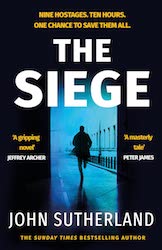 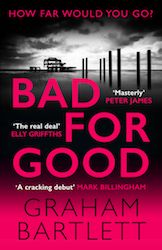
The Siege by John Sutherland [Orion], formerly with the Metropolitan Police, and Bad For Good by Graham Bartlett [Allison & Busby], formerly of Brighton & Hove police and an advisor to numerous crime writers, are both published on 23rd June. I am told nothing suspicious should be read into these synchronised forays into crime fiction rather than crime fact. I am assured both authors have solid alibis.
J’espionne
Anyone undertaking the Herculean, and almost certainly thankless, task of compiling a list of, say, the Top 150 writers of spy-fiction, will surely have included French novelist Pierre Boulle (1912-1994). Best known for The Bridge on the River Kwai and Monkey Planet, Boulle spread himself across many genres, including spy-fi, most notably with two novels which examined the psychology of spies and double agents during WWII.
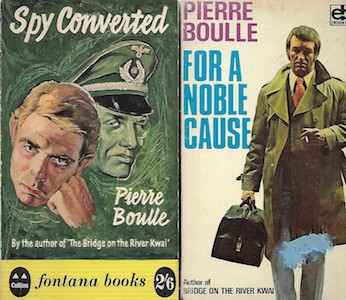
First published in English in 1955, Spy Converted (originally titled William Conrad) contains a big spoiler alert in its very title as, in a nutshell, this is the story of a German - supposedly a die-hard Nazi - who is planted as a sleeper agent in England just before the war.. His mission is to use his literary skills to worm his way into the British establishment, which he does, becoming a leading light in the planning and production of propaganda. To cement his cover, he even serves, with distinction, in the British army at Dunkirk, although a shadowy head of British counter intelligence (known as ‘X’ rather than ‘C’ or ‘M’) has his suspicions. After observing the British at war and a long correspondence with an army buddy serving in the Far East, Conrad finds himself contributing positively to the British propaganda effort rather than trying to sabotage it and undergoes a full conversion to end up fighting on the side of the angels, or at least the English, at the battle of El Alamein.
For A Noble Cause, which was published in the UK in 1961, is the better thriller, a psychological study, overseen by British intelligence’s resident psychiatrist ‘Dr Fog’, of an SOE agent suspected of being either a coward or having been ‘turned’ by the Germans, or both, after a disastrous operation in occupied France. There is the standard spy-fi trope of who-is-fooling-whom but the key question is why is the agent fooling himself? After a second botched operation in France, it doesn’t end well for the far-from-noble hero.
As far as I can tell, both novels first appeared in France in 1950 and both were translated by Boulle’s regular translator, Xan (Alexander) Fielding. It seems churlish to suggest that Boulle’s work might benefit from new translations especially these two titles - for short books they seem incredibly long-winded at times - as Xan Fielding was actually closer to the subject matter than Pierre Boulle, having served with distinction (winning the DSO) as a Special Operations Executive agent in Crete and the Far East during WWII and then as a member of MI6 in the immediate post-war period.
I am reminded of another past master of spy fiction by my South American correspondent who, writing on the blog Una plaga de espias, remembers the Spanish edition of George Markstein’s 1974 wartime chiller The Cooler.
 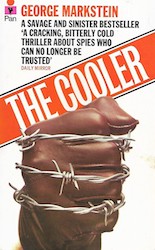
Markstein (1929-1987) was a novelist, script-writer and television producer. He wrote the script for The Odessa File movie and was closely involved with television shows such as Danger Man and The Prisoner, in which he made a cameo appearance in the opening titles as the man behind the desk which Patrick McGoohan thumps violently as he hands in his resignation.
A Day at the Races
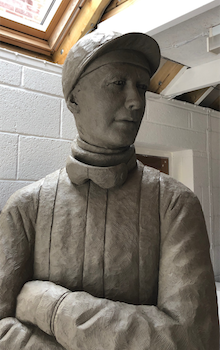 If you fancy at day at the races, specifically the first day of the Grand National Meeting at Aintree on 7th April, then you could have the added bonus of seeing the unveiling of the statue of Dick Francis, champion jockey and champion thriller writer. If you fancy at day at the races, specifically the first day of the Grand National Meeting at Aintree on 7th April, then you could have the added bonus of seeing the unveiling of the statue of Dick Francis, champion jockey and champion thriller writer.
The siting of the statue, funded by contributions from family, friends, race-goers and readers, at the top of the steps outside the Aintree weighing room, is fitting because apart from his success as a jockey there, Dick Francis (1920-2010) was also instrumental in the 1982 Grand National Appeal to save Aintree racecourse from housing development.
William Newton’s statue of Dick, seen here as a clay model, has been cast in bronze and there is a rumour that the unveiling with be performed by a member of the royal family, who were, famously, keen followers of his riding and then writing careers.
Norwich, A Fine City
I am delighted to report that my old chumette and Shots colleague Ayo Onatade will be taking part in a symposium on the development of the thriller on 31st March at my old Alma Mater, the University of East Anglia in Norwich.

The symposium is part of a day-long celebration of the work of Lee Child, whose literary archive has been donated to the university, and the event is sure to take the City’s mind off the fate of its football team, though they will get no sympathy from Lee, as he supports Aston Villa. Well, nobody’s perfect.
Following a Lead
I was unaware of the work of Humphrey Slater (1906-1958) either as a painter or a writer, until I followed a lead provided by the Spybrary website which informed me that the very first Cold War spy thriller was probably his The Conspirator, published in 1948. Intrigued, I followed the trail of crumbs provided by the jolly old interweb, but failed to acquire a copy. I did, however, discover a wartime thriller by Humphrey Slater, initially entitled The Malefactor but better known as Soldiers Three, which may have appeared posthumously in 1958.
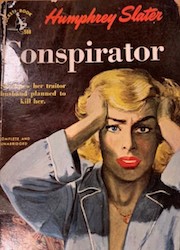 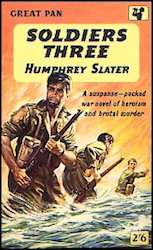
And I have to say Soldiers Three is a damned good war story, set in the retreat to Dunkirk in 1940, a British soldier is suspected of shooting his sergeant who had panicked during a battle, endangering his own men. The soldier is arrested and faces court-martial at battalion headquarters, where he is sent under the guard of two military policemen. They do not know the details of his alleged crime and in the chaos of war, all witnesses back in the front line are killed. In an attempt to get to Dunkirk, the prisoner emerges as the leader of the three isolated soldiers and sees them through various scrapes to the beaches. Back in England, there is no-one to press charges and his MP escort now both owe him their lives. So does he get away with murder?
Clearly the author knew of what he wrote and I discovered that he was a fascinating character, possibly one straight out of spy fiction. He attended the Slade School of Art, determined to become a painter but whilst studying in Berlin in 1932, became a dedicated anti-Nazi. On his return to England he joined the British Communist Party and went to fight with the International Brigade in Spain in 1936. Slater’s experiences in Spain lead to him being appointed as an instructor at the Home Guard guerrilla warfare training centre in 1940, but he and a fellow officer (also a Marxist) were deemed to be politically unsound and dismissed. He was later conscripted into the British Army as a private soldier.
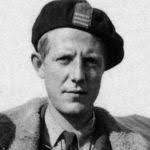
After WWII, Slater concentrated on political journalism and wrote a handful of books including the Cold War spy novel Conspirator which was filmed by Hollywood starring Elizabeth and Robert Taylor (no relation).
For the Over-Sixties
I refer of course to those crime writers, and there are more than you might think, who had more than sixty novels published in their lifetimes. In honour of one of them, Christopher Bush (1885-1973), the ever-enthusiastic Dean Street Press has reissued thirteen more titles to complete the set of 63 Bush novels featuring his series detective Ludovic Travers.
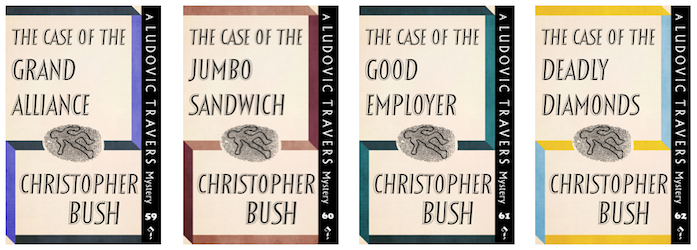
Making his first appearance in 1926, Travers was to feature in sixty-two further titles, all of which have been revived by Dean Street, but just in case you are feeling short-changed, they have also republished The Trail of the Three Lean Men from 1932, which Bush wrote under the pen-name Noel Barclay.
Spies Past and Present
I have just received an advance proof of Tom Bradby’s new spy novel, to be published by Bantam in May. I am sure I will enjoy it – as Tom is a good writer and a thoroughly good guy – as much as I enjoyed a book with the same title 47 years ago.

|
|
BOOKS OF THE MONTH

No, I wasn’t aware of Edith Tudor-Hart (nee Suschitzky) and her connection to the ‘Cambridge ring’ of spies, the most famous of which was Kim Philby, either until I read Edith and Kim, the new novel from Borough Press by Charlotte Philby, and quite honestly, I can’t think who else could have written it better.
Told with a liberal sprinkling of extracts from SIS security reports (genuine ones as far as I can tell) and letters from Kim Philby in exile in Moscow, Charlotte Philby constructs a Rubik’s cube of fiction around the real lives of a network of spies which, born out of anti-fascist beliefs in pre-war Vienna, showed a dogged faith in Stalin’s NKVD (and its dubious track record) as it infiltrated British industry and the intelligence hierarchy.
A talented, Bauhaus-trained photographer, Edith Tudor-Hart, who died in 1973, was far from the kingpin in this network but simply knowing what she did, and knowing who she did, made her a person of some interest to the security services. The paranoia and downright fear she felt - a woman often alone with a mentally disturbed child - is poignantly told and with great skill and compassion. Charlotte Philby has written an intriguing piece of fictionalised espionage history to add to the jigsaw that was her grandfather.
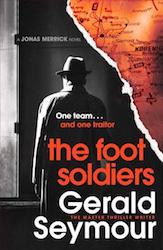
The ‘poor bloody infantry’ rather than flash (fictional) secret agents are the real heroes of espionage and in The Foot Soldiers [Hodder], veteran journalist and thriller writer Gerald Seymour does them proud. His new novel charts two intelligence operations, one in Russia, one in Denmark, both on the brink of going badly wrong. Make that three operations if you count the activities of a Russian hit-squad being fed leaked information by a mole in MI6, and four if you add in the MI5 operation to trap the mole.
Heading this latter operation is a spy-catcher as far removed from James Bond (and indeed George Smiley) as is possible. Jonas Merrick is a desk-bound mouse - ‘so ordinary, so nondescript’ - who commutes to the office daily with nothing more lethal in his briefcase than his sandwiches and always catches the same train home of an evening. His one weakness seems to be coffee and walnut cake and for relaxation he takes his wife and his cat and tows a small caravan to a variety of windswept sites on the southern coast, or in this case on a bird-watching expedition (his wife’s idea) to Suffolk. He seems hardly the man to catch a mole and sabotage a Russian hit-squad, especially when the gatekeepers at MI6 refuse to let him into the building! But Merrick is a dogged, methodical operator with a talent for detail, knowing and appreciating that the rough stuff will be done by loyal and brave men and women out in the field.
This is multi-layered spy-fi at its best, with Seymour showing that even after thirty-seven novels he has lost none of his talent for thrilling plots and creating credible and sympathetic characters, nor his journalist’s eye for modern espionage tradecraft and techniques (and often the old ones are the best).
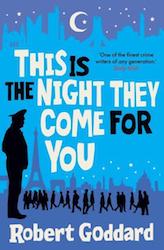
I must admit that my knowledge of modern Algerian politics (at least since the days when Vandals and Byzantines disputed things) has been mostly gleaned from the novels of Alan Williams and Frederick Forsyth, both of whom chose the turbulent 1960’s for their settings. I had no idea just how unsettled and violent a place Algeria had been in the thirty years following, and how the wounds inflicted and the crimes committed then still resonate today. Until that is, I read Robert Goddard’s new thriller This Is the Night They Come For You [Bantam] and after doing so, I feel far-better informed as well as thoroughly entertained by an utterly absorbing thriller.
The intricate plot, which has its roots in an incident of brutal state thuggery by France and the revenge taken by Algerian ‘freedom fighters’ using a naïve Englishman as a stalking horse, has repercussions across the decades as a conspiracy by both the French secret service and a shady Algerian kleptocracy emerges. More deaths and a disputed confession from the past bring the story up to date and forces an unlikely alliance between the ageing, chain-smoking police Superintendent Taleb and the all-action female agent Hidouchi of the Algerian security service.
It all ends in betrayals and violence on the streets of Paris, where it all began sixty years before. Consummately plotted and sprinkled with some memorable characters, Robert Goddard takes unfamiliar subject matter and makes it gripping reading thanks to sheer story-telling expertise.
Told from the point-of-view of two women - and possibly the ghost of a witch - both with problems being mothers, both having problems with their mothers and their husbands, one in the 1930s the other in the 1960s but linked by a ramshackle house on the desolate Norfolk coast, The Marsh House by Zoë Somerville [Head of Zeus] is a genuinely spooky mystery.
 Escaping from a disintegrating marriage, the less-than-stable Malorie leaves London and husband with their eight-year-old daughter in tow and runs away to spend Christmas 1962 in a rented house on the edge of a desolate saltmarsh on the snowy north Norfolk coast. To say that Malorie hasn’t thought this through is an understatement and quickly picks up on some very bad vibes from the few locals she encounters as well as the house itself. Her only relaxation is a series of notebooks found in the attic which, written in 1932, tell Rosemary’s unhappy story of life in the Marsh House. There is a running thread of early Agatha Christie mysteries (avidly devoured by Rosemary) which offer some blatant clues to where one of the linked stories is going and some fascinating background on the British Union of Fascists in the 1930’s sections plus the awful spectacle of Malorie cracking up as the worst winter in decades snows in the house. But what Somerville does best is catch the cold, dank isolation of that part of East Anglia, a landscape sculptured specifically for ghost stories. Escaping from a disintegrating marriage, the less-than-stable Malorie leaves London and husband with their eight-year-old daughter in tow and runs away to spend Christmas 1962 in a rented house on the edge of a desolate saltmarsh on the snowy north Norfolk coast. To say that Malorie hasn’t thought this through is an understatement and quickly picks up on some very bad vibes from the few locals she encounters as well as the house itself. Her only relaxation is a series of notebooks found in the attic which, written in 1932, tell Rosemary’s unhappy story of life in the Marsh House. There is a running thread of early Agatha Christie mysteries (avidly devoured by Rosemary) which offer some blatant clues to where one of the linked stories is going and some fascinating background on the British Union of Fascists in the 1930’s sections plus the awful spectacle of Malorie cracking up as the worst winter in decades snows in the house. But what Somerville does best is catch the cold, dank isolation of that part of East Anglia, a landscape sculptured specifically for ghost stories.
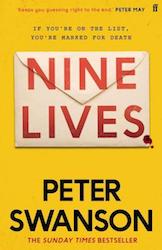 Another new novel which contains copious references to Agatha Christie titles (and one in particular which used to be called Ten Little Something-or-other) is Nine Lives by Peter Swanson [Faber], though I was delighted to see a reference, entirely superfluous to the plot, to the Travis McGee stories of John D. MacDonald. Another new novel which contains copious references to Agatha Christie titles (and one in particular which used to be called Ten Little Something-or-other) is Nine Lives by Peter Swanson [Faber], though I was delighted to see a reference, entirely superfluous to the plot, to the Travis McGee stories of John D. MacDonald.
This is, once again, Peter Swanson having fun with the form of the traditional whodunit? It begins with a list of nine unconnected (seemingly) names of individuals spread across America. Before long, only eight are unmurdered, then seven, then...you see where this is going. Is the killer themselves on the list? Convention would insist on it and, in truth, it’s not actually too difficult to work out who the killer has to be, though the motive for the ‘death list’ is only revealed at the end. It sounds odd to describe a story containing so much viciously cold violence and twelve deaths, by my count, as ‘fun’ but Swanson clearly enjoys pushing the format of the old school detective story as far as it will go, paying due respect to past masters of the genre, and the pace of his story-telling -including some genuine shocks - make it well worth the suspension of disbelief required.
 Young, footloose and reckless as well as penniless, Jess arrives in Paris - her first time abroad and with a disturbed childhood behind her - to find her brother Ben, now working as a freelance journalist and living in a sumptuous apartment building which is surely way above his pay grade. Except Ben isn’t at home and unfortunately for Jess, the other residents of the building, from concierge up to the penthouse, are and they all have something to hide. Young, footloose and reckless as well as penniless, Jess arrives in Paris - her first time abroad and with a disturbed childhood behind her - to find her brother Ben, now working as a freelance journalist and living in a sumptuous apartment building which is surely way above his pay grade. Except Ben isn’t at home and unfortunately for Jess, the other residents of the building, from concierge up to the penthouse, are and they all have something to hide.
Not that the residents seem, at first, unusual. One has adopted several of the fads he picked up in California: spinning, bulletproof coffee, keto, Bikram and listening to Ted Talks, which I am told are all perfectly respectable although a complete mystery to me.
Narrated from multiple viewpoints in short sharp chapters, The Paris Apartment by Lucy Foley [HarperCollins] is a sure-fire hit, delivering some believably suspicious characters (almost all of them), a deliciously creepy setting, a reluctant and vulnerable heroine, as well as a fine wine club the like of which you will not see advertised in the Sunday papers. A complex, claustrophobic whodunit - or more accurately ‘who-got-done?’ - which grips the reader like a fly in a web.
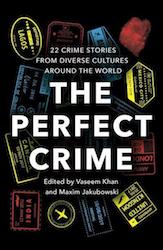 The Perfect Crime edited by Vaseem Khan and Maxim Jakubowski [HarperCollins] is an anthology which showcases the diversity of crime-writing these days with twenty-two stories from different settings and cultural perspectives. The Perfect Crime edited by Vaseem Khan and Maxim Jakubowski [HarperCollins] is an anthology which showcases the diversity of crime-writing these days with twenty-two stories from different settings and cultural perspectives.
There are some writers here you will be aware of: Walter Mosley, Mike Phillips, Vaseem Khan, Abir Mukherjee (with a delightful slice of Scottish treachery) and S.A. Cosby. Then there are some contributors you ought to be aware of, such as Silvia Moreno-Garcia, Oyinkan Braithwaite, Imran Mahmood and David Heska Wanbli Weiden. And then there is the pleasure of discovering new names with stories from America, Canada, Australia and New Zealand. A positive cornucopia of criminal delights.
Re-Issues of the Month
 Although Georges Simenon’s The People Opposite contains a spate of arsenic poisonings, it is not really a crime novel and although it features secret policemen, a missing diplomat and an escape across a closed border, it is not really a spy thriller. It is a bleak psychological thriller in that it is gripping study of paranoia, but above all it is a political novel which pulls no punches when describing the deprivations, cruelties and oppression of Stalin’s Russia in the early 1930s. Although Georges Simenon’s The People Opposite contains a spate of arsenic poisonings, it is not really a crime novel and although it features secret policemen, a missing diplomat and an escape across a closed border, it is not really a spy thriller. It is a bleak psychological thriller in that it is gripping study of paranoia, but above all it is a political novel which pulls no punches when describing the deprivations, cruelties and oppression of Stalin’s Russia in the early 1930s.
Now reissued as a Penguin Classic, The People Opposite tells the story of a replacement Turkish consul sent to the Black Sea Georgian port of Batumi where a small colony of foreign diplomats struggle with suffocating Soviet officialdom, a starving local population and the omnipresent OGPU secret police.
Written following a visit to Russia and Turkey (where he interviewed the exiled Leon Trotsky), the novel was first published in 1933 - just about the same time that a young Kim Philby (and others in Cambridge) were secretly nailing their colours to the mast. The novel also contains the phrase ‘of all the gin joints in the world’ a decade before it became part of a famous line in my all-time favourite movie.

I’m delighted to see that No Exit Press are continuing their crusade to keep the works of the late Ted Lewis (1940-1982) in the reading public’s eye, as for the Godfather of British noir this is a most noble cause. First published in 1973 and 1974 respectively, new editions of Billy Rags and Jack Carter’s Law come with an introduction by Nick Triplow, the author of the definitive work on Ted Lewis and his influence on British crime writing, Getting Carter.
More good news is that Nick Triplow will be appearing at Crimefest in May talking about Ted Lewis in an ‘Authors Remembered’ panel. The less good news (for him) is that I’m on that panel too.
Forthcoming Re-issue
I do not have a specific date yet but I am looking forward to a forthcoming re-issue by American publisher Valancourt, who have shown themselves to be big fans of British fiction as long as it’s as ghoulish and macabre as possible.
John Blackburn (1923-1993) was one of the few thriller writers to combine the spy story with the horror novel. The result was never less than suspenseful and distinctly spooky and although occasionally Gothic to the point of absurdity, they were always entertaining.
Valancourt, who have done a splendid job getting much of Blackburn’ fiction back into print in the past, are planning a new edition of For Fear of Little Men, from 1972, which features Blackburn’s series hero Sir Marcus Levin, a noted microbiologist and sometime secret agent.
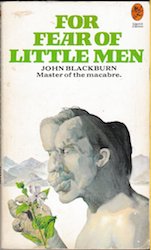 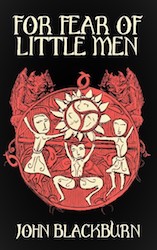
It is a very long time since I read it; perhaps, perish the thought, fifty years. Yet I seem to remember it contained some devilish goings-on on the Welsh coast which put me off holidays in Colwyn Bay for years.
The Tigress in La Fumée
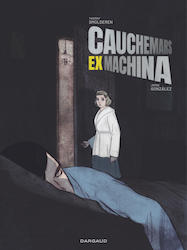 As a lifelong fan of the works of Margery Allingham, the ‘continuation author’ of the adventures of her famous sleuth Albert Campion for ten years now, an assiduous reader of the excellent biographies by Julia Jones, a member of the Margery Allingham Society and living close to Margery’s married home (I even have flowers in my garden seeded from hers), I thought I knew a fair bit about her. As a lifelong fan of the works of Margery Allingham, the ‘continuation author’ of the adventures of her famous sleuth Albert Campion for ten years now, an assiduous reader of the excellent biographies by Julia Jones, a member of the Margery Allingham Society and living close to Margery’s married home (I even have flowers in my garden seeded from hers), I thought I knew a fair bit about her.
However, I now learn that Margery Allingham, who died in 1966, is the fictional detective in a series of comics , sorry, graphic novels, published, where else, in France. Whatever next?
Pip! Pip!
The Ripster
|